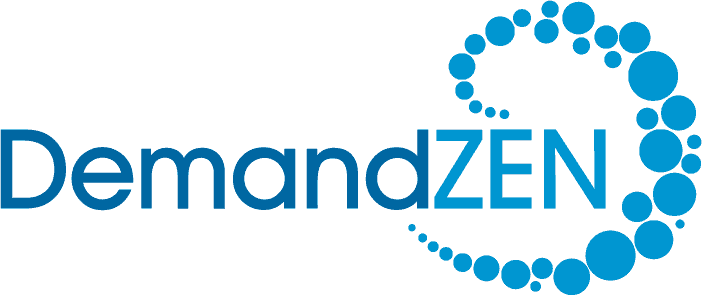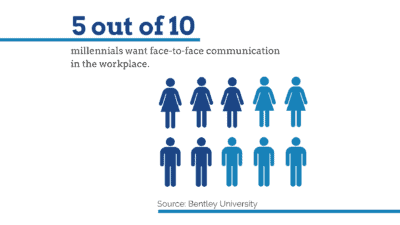Sales Enablement Strategies

Sales enablement is now in full swing within the B2B world. The number of businesses with a dedicated sales enablement role has grown by 30 percent in the past five years. It’s a must-have function in B2B and crucial to building a strong business. For those unfamiliar with the term, it’s a newly coined phrase referring to a range of practices (i.e. sales enablement strategies) that aim to facilitate sales.
So what does the concept of sales enablement actually involve and how can it help your business?
What is sales enablement?
Simply put, it’s a strategic approach designed to empower your sales teams and drive results fast. At its core, it provides your sales teams with the content, processes, and tools they need to close deals.
Sales enablement is a complex, multi-faceted endeavor involving coordinated efforts across departments. It includes content creation, data analysis, and information sharing. It also includes sales and marketing integration, data-driven processes and feedback loops. The common goal is to enhance sales productivity and efficiency.

Benefits of sales enablement
Here’s what sales enablement can do for your business.
Helps you adapt to the changing sales landscape
The digital age has changed everything, including the way businesses make purchasing decisions. The omnipresence of the internet has shifted the balance of power from sellers to buyers. This is especially true in a B2B tech setting.
This is because today’s decision-makers are empowered and knowledgeable about their purchase choices. In a world where knowledge is at everyone’s finger tips, they expect to be able find whatever information they want, when they want it. They expect to be able to do that research on their own terms. Today’s decision-makers also expect a superior user experience. And place high expectations on every single interaction with your brand.
Sales enablement helps your reps adjust their tactics to the specific purchase habits of the business that you are targeting. It equips them with key skills and resources so they can respond to customer demands.
Streamlines the sales cycle
Your sales process is not a random activity, or at least it shouldn’t be. It requires careful design, implementation and fine-tuning.
The best way to optimize your sales process is by using CRM and marketing automation tools. When properly configured for sales enablement, these tools can help your teams track sales progress, share data and manage customer relationships. CRM tools can also serve as centralized hubs for sales content. This way, the sales collateral is easily accessible, not scattered across databases.
Keeps good people on board
Teaching your sales reps the art of closing deals takes a lot of work. So, the last thing you need is dealing with people who are constantly leaving. This keeps you stuck in a perpetual loop of good people quitting and newcomers requiring training.
Sales enablement can reduce turnover by coaching people how to excel at their job, reach their quotas and interact with confidence. It provides reps with knowledge of products and sales strategies so they can close deals faster. And in turn, satisfied and motivated employees are less likely to look for a job elsewhere.

Best sales enablement strategies
There are many sales enablement tools and tactics you can try to help your sales teams shine. Whatever you choose to go with, remember that consistency is key in sales enablement. Consistent efforts on your part will result in a smooth client experience throughout their life cycle.
Let’s take a look at some of the most effective sales enablement strategies that you can try.
Focus on customer satisfaction
The selling process doesn’t end when you close the deal. Post-sale interaction matters even more. This is understandable given the fact that it is way cheaper to retain a customer than acquire a new one.
Poor customer experience is one of the main reasons for churn. You should always do your best to keep the communication alive. Touch base once a month just to check if everything is okay. Send regular newsletters featuring advice and product updates.
Your sales reps are uniquely positioned as middlemen between you and the buyer. Capitalize on this to find out what clients think of your sales efforts. Use this feedback to optimize your sales strategy.
Hire the right salespeople
Sales isn’t everyone’s cup of tea. But those who enjoy it share many personality traits. Of course, background and experience matter in the hiring process. But personality also deserves a place in the equation.
Your sales reps should be ambitious, resourceful and able to take rejection in a stoic and objective manner. Customer empathy and good organizational skills are also high on the list of traits. It goes without saying that strong work ethic and team spirit are a must for a sales rep.
Make sure your recruitment and sales team are on the same page when it comes to the ideal candidate profile. Bad hires can cost you more than just money. Hiring a single disengaged and disrespectful person can derail the morale and productivity of the entire team.
Don’t rush the onboarding process
You want your new sales reps on the field, closing deals as soon as possible. But not at the expense of sending them to approach a prospect unprepared. Onboarding should always focus on competence, not the fast deployment of your new reps.
Your sales enablement team can help you streamline the onboarding process. They can create a framework that defines and tracks people’s knowledge, skill and progress.
Onboarding is a complex endeavor. New arrivals have to familiarize themselves with your products, company structure, and sales process. They must learn how to distinguish your offer from the competition and convey its value. A set of training courses covering all these key aspects can help them get there faster.
Make sure to include your top performers in the onboarding process. Ask them to share their expertise and offer insights and tips to their new colleagues.
Mentoring programs are another practice that yield results. Mentors help newcomers acclimate, monitor their progress and guide them through the sales stages. A 90-day program is usually enough for most reps.

Ongoing sales training is essential
Make sales training sessions a regular thing. The highest close rates always go to sales reps with in-depth knowledge of the market, industry, and products. Continuous coaching and certification do wonders for sales quotas and keep turnover rates low.
Organize regular training workshops as part of your sales enablement efforts. For instance, training to keep your reps up-to-date with the latest product features. You can also have workshops about changes in the sales process, the buyer persona or customer interaction.
As your product portfolio grows and the sales process changes, update your training materials. Review the learning goals, remove unsuitable segments and include fresh, relevant content.
Align your sales and marketing teams
Today’s sales process demands full alignment of your sales and marketing teams. There can be no separate agendas, timetables or objectives. Sales enablement helps bridge the gap that often exists between sales and marketing. Instead of letting them blame each other for sales failures, it helps them cooperate.
By aligning sales and marketing, you’ll be able to define your buyer persona more accurately. Sales teams deal directly with the prospects. So, they know best what type of customers find your products appealing. The alignment will also ensure that the vision of your buyer persona matches that of the sales team. This allows for effective targeting, which in turn leads to sales with more leads.
Sales should provide the marketing department with regular feedback on the effectiveness of marketing efforts. This way, marketing can fine-tune their future strategies.
Define your technology stack
Once Sales and Marketing are aligned, you’ll be able to easily determine where gaps lie in your current technology stack. Perhaps your reps need to have a content management tool that allows them to quickly find the best collateral to use based on a prospect’s previous interactions or where they are in the buying cycle. Or, maybe your reps need to implement a dialing tool or sales cadence program to reach out to more people each day.
Whatever lies in your technology stack, each piece should address a defined set of integrate with each other.
At DemandZEN, we specialize in creating high demand by integrating your sales and marketing teams. Using content marketing, SEO and automation tools, we facilitate the journey of the buyer through the sales pipeline.
Our professionals provide strategies, tools and marketing expertise to elevate your sales enablement efforts so you can start seeing results fast.
You Might Also Enjoy These Posts
B2B Appointment Setting Tips and Tricks that Always Work
Managing a Remote Sales Team: The Importance of Face Time
Welcome To DemandZEN
DemandZEN specializes in Account-Based Demand Generation and solving the challenges around finding, engaging and converting target accounts into real opportunities for B2B Technology and Services companies.


